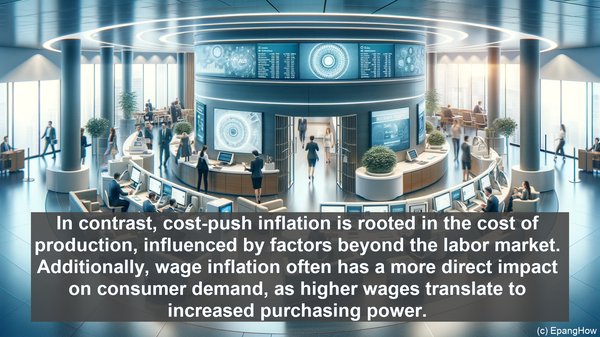Introduction: The Complexity of Inflation
Hello, everyone! Inflation is a multifaceted economic phenomenon, influenced by numerous factors. Today, we’ll delve into two specific types: wage inflation and cost-push inflation. While they both contribute to rising prices, their underlying causes and implications differ significantly.

Wage Inflation: The Role of Labor Market Dynamics
Wage inflation occurs when the average wages across industries and occupations increase over time. It is often driven by factors such as labor demand and supply. When the demand for labor surpasses the available supply, employers may need to offer higher wages to attract and retain talent. This increased spending power of workers can subsequently lead to a rise in consumer demand, driving up prices in the market.
Cost-Push Inflation: The Ripple Effect of Production Costs
Cost-push inflation, on the other hand, stems from an increase in the production costs of goods and services. This can be caused by various factors, such as a surge in raw material prices, higher energy costs, or changes in government regulations. When businesses face higher expenses, they often pass on these costs to consumers through higher prices. As a result, the overall price level in the economy rises.
Distinguishing Factors: Wage Inflation vs. Cost-Push Inflation
While both wage inflation and cost-push inflation contribute to rising prices, their key distinctions lie in their origins. Wage inflation is primarily driven by labor market dynamics, reflecting the bargaining power of workers and the demand for their skills. In contrast, cost-push inflation is rooted in the cost of production, influenced by factors beyond the labor market. Additionally, wage inflation often has a more direct impact on consumer demand, as higher wages translate to increased purchasing power. In contrast, cost-push inflation affects prices more indirectly, as it depends on how businesses choose to pass on their increased costs.

Implications and Policy Considerations
Understanding the differences between these two types of inflation is crucial for policymakers. For instance, when wage inflation is high, it may indicate a tightening labor market, potentially necessitating measures to address skill shortages or improve labor productivity. On the other hand, cost-push inflation may require policymakers to assess the underlying factors driving production costs and consider strategies to mitigate their impact. By tailoring their responses based on the specific type of inflation, policymakers can aim for a more targeted and effective approach.
